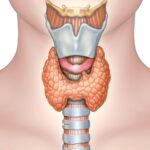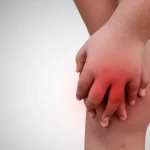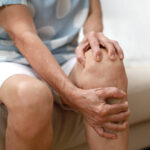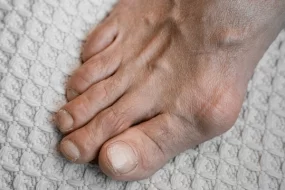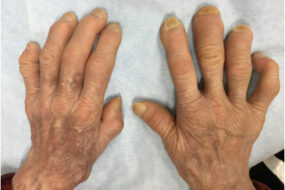- Home
- INTERNAL MEDICINE
- Ascariasis
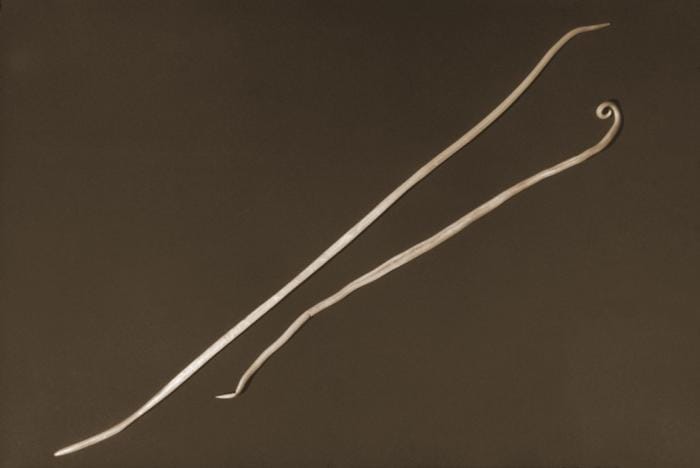
Ascariasis is an intestinal infection caused by the nematode Ascaris lumbricoides, the largest intestinal roundworm infecting humans. It is a major helminthic infection affecting populations in tropical and subtropical regions, particularly in areas with poor sanitation.
Pathophysiology:
The life cycle of Ascaris lumbricoides involves:
- Ingestion of embryonated eggs: The infection begins when a person ingests eggs from contaminated food, water, or soil.
- Larval migration: After hatching in the small intestine, larvae penetrate the intestinal wall and enter the bloodstream, migrating to the liver and then to the lungs via the bloodstream.
- Pulmonary phase: In the lungs, larvae mature further, penetrate the alveolar walls, ascend the respiratory tract, and are swallowed to re-enter the gastrointestinal tract.
- Maturation in the intestine: Back in the small intestine, larvae mature into adult worms, which can grow up to 30 cm long. Adult worms can live for up to two years in the intestine, where they produce eggs that are passed in the stool, completing the life cycle.
Epidemiology:
- Ascariasis is most common in regions with warm climates and poor sanitation. It is prevalent in sub-Saharan Africa, Latin America, and parts of Southeast Asia.
- Children are particularly affected due to higher exposure to contaminated environments and poor hygiene.
Clinical Presentation:
- Asymptomatic Infection: Many cases, particularly in mild infections, remain asymptomatic.
- Symptomatic Manifestations:
- Pulmonary phase (Löffler’s syndrome): Transient pulmonary symptoms may occur during larval migration, including cough, dyspnea, wheezing, and fever. Chest X-rays may show transient, migratory infiltrates.
- Gastrointestinal phase: Symptoms depend on the worm burden. Patients with heavy infestations may present with:
- Abdominal pain: Often diffuse or periumbilical, due to the presence of adult worms.
- Nausea, vomiting, and diarrhea: Occur with higher worm loads.
- Nutritional deficiencies and growth retardation: Particularly in children, due to malabsorption and competition for nutrients.
- Complications of high worm burden:
- Intestinal obstruction: Particularly in children, due to the accumulation of worms forming a bolus.
- Biliary or pancreatic duct obstruction: May lead to cholangitis, pancreatitis, or hepatic abscess.
- Perforation: Rare but serious, leading to peritonitis.
Diagnosis:
- Stool Examination:
- Microscopy: Identifies Ascaris eggs in stool samples. The characteristic eggs are ovoid, brownish, and have a thick, chitinous shell.
- Stool concentration techniques: May be required in light infections.
- Imaging Studies:
- Abdominal X-ray or ultrasound: May reveal intestinal obstruction or visible worms.
- CT or MRI: In cases of hepatobiliary or pancreatic involvement, imaging may show dilated ducts or visualized worms.
- Blood Tests:
- Eosinophilia: Common during the larval migration phase, reflecting a parasitic infection.
- Serological tests: Not routinely used for ascariasis but may aid in epidemiological studies.
Management:
- Anthelmintic Therapy:
- Albendazole (400 mg orally, single dose): Effective against adult worms. It disrupts microtubule formation, leading to worm death.
- Mebendazole (100 mg orally, twice daily for 3 days or 500 mg as a single dose): An alternative that inhibits glucose uptake in the worm.
- Ivermectin (150–200 µg/kg, single dose): Used particularly in mixed helminthic infections, such as strongyloidiasis or lymphatic filariasis.
- Pyrantel pamoate (11 mg/kg, single dose): Paralyses the worms, making them easier to expel.
- Treatment of Complications:
- Intestinal Obstruction: Non-surgical management includes nasogastric decompression and intravenous fluids. If conservative measures fail, surgical intervention (enterotomy) may be required.
- Biliary or pancreatic ascariasis: Endoscopic retrograde cholangiopancreatography (ERCP) may be needed to remove worms from the biliary or pancreatic ducts.
- Management of Löffler’s Syndrome: Symptomatic treatment with bronchodilators and corticosteroids may alleviate severe respiratory symptoms during the pulmonary phase.
Complications:
- Intestinal complications: Obstruction, volvulus, and intussusception due to the worm mass.
- Hepatobiliary complications: Obstructive jaundice, cholangitis, hepatic abscess formation.
- Pulmonary complications: Rare but can include severe eosinophilic pneumonitis.
- Malnutrition and impaired growth: Chronic infections in children can result in significant nutritional deficits, impacting physical and cognitive development.
Prevention Strategies:
- Sanitation and Hygiene Improvements:
- Regular handwashing with soap and safe disposal of human feces.
- Improved sanitation infrastructure to reduce soil contamination with human feces.
- Mass Drug Administration (MDA):
- In endemic areas, periodic deworming with anthelmintic medications is recommended, especially for children and at-risk populations.
- Health Education:
- Promoting awareness on the risks of using untreated human waste as fertilizer.
- Educating communities about safe food practices, including thorough washing and cooking of vegetables.
Advanced Considerations for Consultant Physicians:
- Drug Resistance: Though not currently a significant issue with Ascaris lumbricoides, emerging resistance in other helminths underscores the need for vigilance.
- Mixed Helminth Infections: Patients in endemic areas may harbor multiple species. Empiric treatment should consider potential co-infections, such as hookworm or Trichuris.
- Pregnancy Considerations: Mebendazole and albendazole are contraindicated in the first trimester. Pyrantel pamoate is considered safer during pregnancy.
- Co-morbidities: Addressing concurrent conditions, such as malnutrition, may improve treatment outcomes.
Prognosis:
With appropriate anthelmintic therapy, the prognosis for uncomplicated ascariasis is excellent. However, severe complications, such as bowel obstruction or hepatobiliary ascariasis, require prompt intervention to prevent mortality. In endemic regions, reinfection is common, emphasizing the importance of preventive measures alongside therapeutic interventions.


